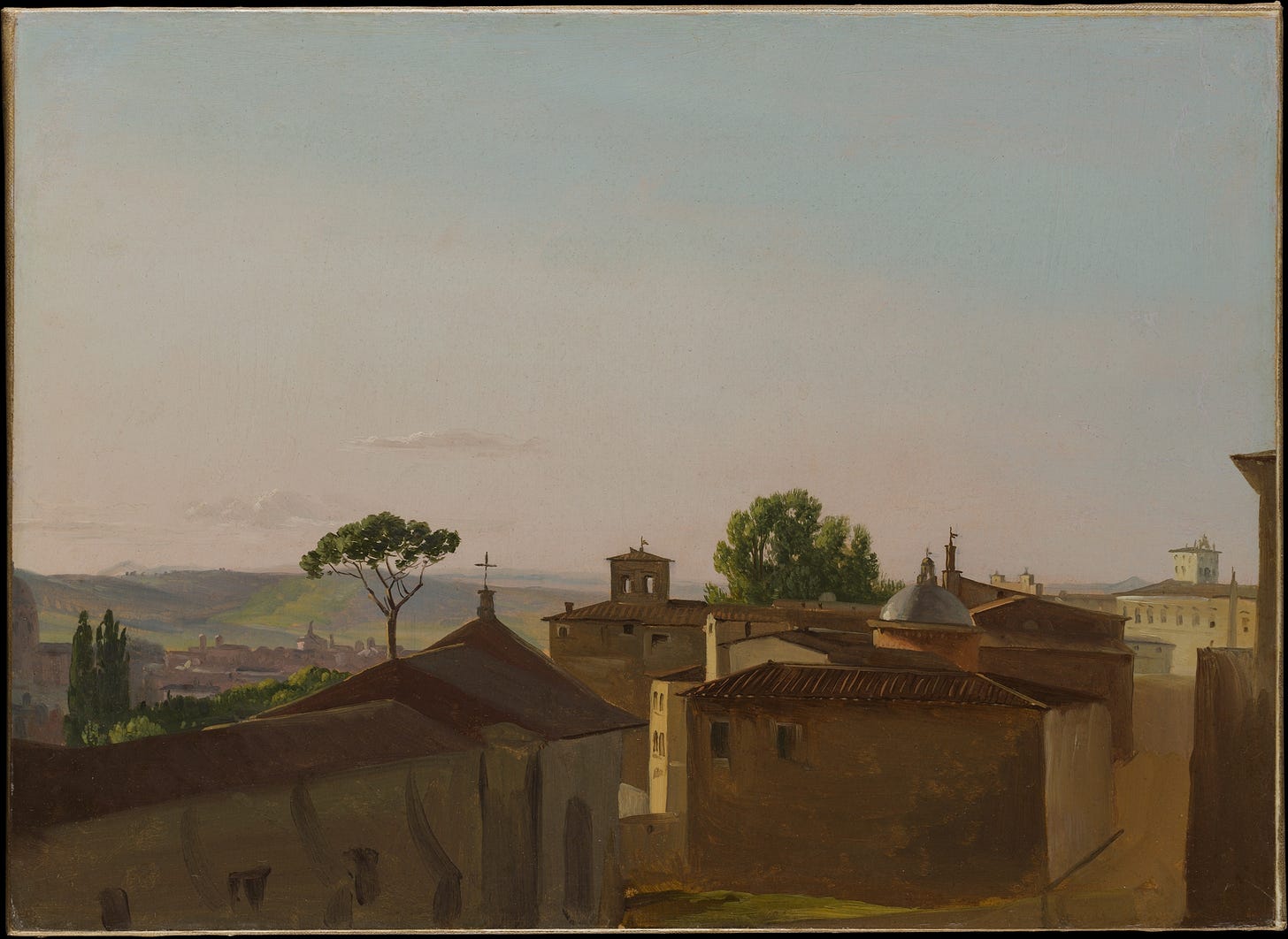A new model for patrons of the arts - by Rebecca Deczynski
On Saturday I attended my first performance of American Ballet Theatre’s summer season at the Metropolitan Opera House to see Olga Smirnova—principal at Dutch National Ballet, who I saw perform less than two weeks ago in Amsterdam—guest star in Kevin McKenzie’s staging of Giselle. Dubbed a “da Vinci” of dance by choreographer Helen Pickett, the 33-year-old Smirnova is a Vaganova-trained ballerina who quickly rose to the top ranks of Russia’s Bolshoi Theater. In 2022, Smirnova denounced her home country for its invasion of Ukraine and left with her husband to their new life in the Netherlands, where Smirnova had quickly secured employment.
Smirnova really is that good. Languid and musically fluent, the dancer is a master technician, but that fact is almost beside the point. What makes her such an outstanding performer is her total embodiment of her roles, which leads her to linger a little longer in an arabesque or indulge in the final stretch of a penché. It is not about the tricks; it is about the movement.
Her Giselle is naïve one, she recently told
in an interview for Fjord Review, which results in a particularly heartbreaking portrayal. But before we get into that, a brief plot synopsis for those unfamiliar with this classic ballet: Giselle is a peasant girl who is doubly pursued by Hilaron, a local gamekeeper, and Albrecht, a nobleman who is disguised as a commoner. Giselle does not share Hilarion’s feelings, but she quickly falls in love with Albrecht. Then, just as quickly, Hilarion discovers and reveals Albrecht’s ruse: not only that he is noble but that he is engaged to another noblewoman. This drives Giselle—who canonically has a weak heart—into a rampage until she collapses and dies. In act two, she is resurrected to join the Wilis, ghosts of women who have died of broken hearts and, seeking revenge, lead men who cross their path to dance to their deaths. The Wilis, lead by their queen Myrtha (portrayed by the regal Chloe Misseldine) put an end to Hilarion and try to do the same to Albrecht, but Giselle’s unending love for him is what saves him. Dawn breaks, the Wilis, as a result, lose their power, and Giselle returns to her grave, leaving Albrecht alone.
There are a lot of mixed feelings about Giselle, especially in the 21st century: what does Giselle’s forgiveness of a man who wronged her say to audiences today? It’s an uncomfortable feature of the plot, and one that can, at best, feel outdated. We are expected to believe, more often than not, that Albrecht really does love Giselle, and that it is not his fault, ultimately, that he betrays her; he can’t help his naturally given station. This was not the case in Saturday’s production.
ABT principal Daniel Camargo’s depiction of Albrecht has a seismic impact on the tone of this ballet. Unlike most dancers who take on the role, Camargo has chosen to make his Albrecht—for lack of a better term that truly captures this artistic choice—a fuckboy. Or, as Smirnova tells Harss: “his relationship with this young and naïve peasant girl is more like an entertainment or a game for him.”
This choice, evident in Camargo’s posture and gestures in the first act, makes him the perfect foil for Smirnova’s innocent Giselle, who reads, appropriately, like a teenage girl. Some of the most impactful moments of this performance were those in which Smirnova and Camargo’s were simply acting; Smirnova’s moment of feigned exhaustion while dancing with her fellow peasant girls in Act I is such that you feel, suddenly, concerned about the ballerina’s ability to go on. When she dies, rather than devastated, Camargo’s Albrecht is panicked, going from villager to villager, seeming to attest that he isn’t at fault, before he flees the scene of the crime.
After the first act, I knew that I was experiencing a performance I will remember forever and witnessing what may be the most correct depiction of this story I’ve seen. When Albrecht lives, right before the close of the curtain, he steps back, looking—accurately—as if he’d seen a ghost. It is Giselle’s uncompromising, spectral love for him that saves him, but this, too, may be punishment: he has to live with himself for the rest of his life. He moves toward the audience, more harrowed than heartbroken.
It’s performances like this that reaffirm how strongly I feel about art and its powers of expression; despite the news and the fairly morbid plot of this ballet, the experience of seeing artists at—or approaching—the height of their powers is a life-affirming one. This is why I write about the things I write about. I want more people to feel like these kinds of experiences are accessible to them and more people to feel the essential value art and artists have in the world.
I’ve been writing these weekly recaps for more than a year now, and they do take quite a bit of time to put together. To that effect, I’ll be paywalling a portion of these weekly sends; monthly subscriptions are $5, but I’ve set the annual subscription price at $30 (which comes out to $2.50/month). Your support enables me to invest further in building this newsletter, covering everything worth knowing in the world of arts and culture, and—hopefully—bringing you more writing that helps you to dive deeper into your own interests to discover authors, composers, musicians, dancers, choreographers, curators, and other cultural tastemakers that can open your eyes to something new. I hope you’ll come along for the ride!
If you are a student or art-maker of any sort who finds this cost prohibitive, I am happy to comp a subscription. Just reach out!
Art Basel, the complex relationship between museums and art galleries, the future of reading, Broadway shows for men, a debate about cellos, James Baldwin adaptations, an artist whose work was almost lost to time, and more.
, which is one of London’s most delightful museums, can be found in a gorgeous Marylebone townhouse, Hereford House, which was once occupied by the marquesses of Hereford and Sir Richard Wallace (who was likely one of their illegitimate sons). The 125-year-old collection features a great deal of 18th century art, like Jean-Honoré Fragonard’s “Les Hasards Heureux de L’Escarpolette,” or “The Swing,” as well as plenty of works by the Old Masters, like Rembrandt’s 1657 portrait of his son Titus. The museum is about to get the Annabelle Seldorf treatment, as the architect and her firm remain booked and busy post-Frick remodel. In collaboration with Purcell and Lawson Ward Studio, Seldorf Architects will enhance the gallery spaces, develop a learning center, improve accessibility, and potentially reimagine restaurant and event facilities. There is not yet a timeline for the renovation.
In the meantime, the collection is available online in an enhanced way thanks to a new partnership with Google Arts & Culture. This includes 50 digital stories and a 3D exhibition, a well as 59 “ultra-high-resolution gigapixel captures” of paintings in the collection.
the arts? That would be Chanel, which just announced the launch of Arts & Culture Magazine, which WWD exclusively reported. The project, which is led by Chanel’s Culture Fund, will “revisit the brand’s work with artists and cultural institutions in the last five years.” It will be available in 20 different bookstores worldwide.
I know what you’re thinking: 1. Print is soooo not dead. 2. What even is the Chanel Culture Fund? Well, I will tell you.
Basically, it’s a fund that the fashion house launched in 2021 to support, “cultural innovators around the would who are mapping out what’s next and new,” Chanel’s global head of arts and culture Yana Peel told Vogue UK. It’s a way for brand to validate its own position as a supporter of the arts—therefore benefitting its overall image—while also supporting projects at places like London’s National Portrait Gallery and Shanghai’s Power Station of Art, the first contemporary art-focused public museum in mainland China. It also supports independent artists: last year’s Chanel Next Prize awarded €100k and two years of mentorship to 10 artists.
What makes this fund great is that it seems to not require any payback from the artists involved—Peel told WWD last year that she’s focused on supporting “long-term, transformational” projects, and that artists won’t be ask to say, lend their designs to a Chanel collection. The fund also seems to work with institutions to see what they actually need; for instance, its partnership with the Museum of Contemporary Art Chicago led it to fund six Chanel Curatorial Fellows specializing in the Global South. Scholarship was what the museum needed—not any new acquisitions. This is altogether a very interesting model and one that other luxury brands can doubtless replicate in their own ways. There is always a need for arts funding. I’d like to see some startups step up to the plate here, too. A new model for patrons of the arts…!
its 55th edition of its annual art fair in Basel, Switzerland, and despite a continued slowdown in the art market, it saw more than 88,000 attendees from more than 96 countries and territories—slightly lower than last year’s 91,000 attendees. Representatives from more than 250 museums and foundations, including LACMA, the Guggenheim, MoMA, The Met, the Whitney, and SFMOMA, also attended to shop the more than 289 galleries that exhibited at the fair.
There were mixed feelings ahead of the fair about how well it would turn out. Continued economic uncertainty, especially over tariffs, seemed to have an impact on American attendance. Still, there were plenty of big-ticket sales, like a Ruth Asawa sculpture, which David Zwirner sold for $9.5M (maybe Gwyneth decided to buy the real thing?) and a David Hockney piece, “Mid November Tunnel” (2006), which went for a price between $13-17M, according to seller Annely Juda Fine Art.
There was also some handwringing about whether Art Basel would be outshined by its Parisian edition, scheduled for October 24-26 at the newly renovated Grand Palais, or if other local events, like the pop up Basel Social Club, the nearby June Art Fair, and Maison Clearing, a full-house exhibition by the NYC/LA gallery Clearing, would detract from the big event. In reality, it’s probably to Art Basel’s benefit that several other exhibits and shows have popped up around the fair; the art, after all, is what gets attendees to Switzerland. (And, it seems, the limited-edition Labubu by artist Kasing Lung, which sold out rapidly.)
Said London-based art advisor Bona Montagu to the New York Times: “Collectors who enjoy the lifestyle and the museums are going to Paris.” As is Big.










:max_bytes(150000):strip_icc()/Parents-Daniel-Tiger-Season-8-3b3a5fe4bee54058a278b38416276110.jpg)



